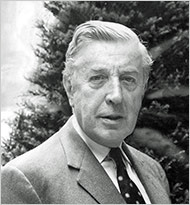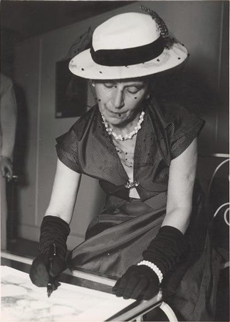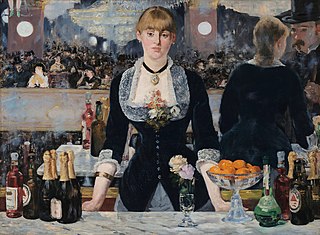Related Research Articles

Sir Frederick William Mallandaine Ashton was a British ballet dancer and choreographer. He also worked as a director and choreographer in opera, film and revue.

Dame Marie Rambert DBE was a Polish-born English dancer and pedagogue who exerted great influence on British ballet, both as a dancer and teacher.
Maude Lloyd was a South African ballet dancer and teacher who immigrated to England and became an important figure in early British ballet as a founding member of Ballet Rambert. She had a significant second career as a dance critic, writing with her husband under the nom de plume Alexander Bland.

Les biches is a one-act ballet to music by Francis Poulenc, choreographed by Bronislava Nijinska and premiered by the Ballets Russes on 6 January 1924 at the Salle Garnier in Monte Carlo. Nijinska danced the central role of the Hostess. The ballet has no story, and depicts the random interactions of a group of mainly young people in a house party on a summer afternoon.
A Month in the Country is a narrative ballet created in 1976 with choreography by Frederick Ashton, to the music of Frédéric Chopin arranged by John Lanchbery. It is based on the play by Ivan Turgenev of the same name, and lasts for about 40 minutes.

Bar aux Folies-Bergère is a one-act ballet created in 1934 with the scenario and choreography by Ninette de Valois. The music consists of piano works of Emmanuel Chabrier selected and arranged by Constant Lambert, and the designs were by William Chappell after Manet.

Pearl Argyle was a South African ballet dancer and actress. She appeared in leading roles with English ballet companies in the 1930s and later performed in stage musicals and in films.
Enigma Variations (My Friends Pictured Within) is a one-act ballet by Frederick Ashton, to the music of the Variations on an Original Theme (Enigma Variations), Op. 36, by Edward Elgar. The work was first given by the Royal Ballet at the Royal Opera House, Covent Garden, London, on 25 October 1968. It has been revived in every subsequent decade.
The Wise Virgins is a one-act ballet based on the biblical Parable of the Ten Virgins. It was created in 1940 with choreography by Frederick Ashton, to a score of music by Johann Sebastian Bach orchestrated by William Walton.
William Chappell was a British dancer, ballet designer and director. He is most noted for his designs for more than 40 ballets or revues, including many of the early works of Sir Frederick Ashton and Dame Ninette de Valois.
Symphonic Variations is a one-act ballet by Frederick Ashton set to the eponymous music of César Franck. The premiere, performed by the Sadler's Wells Ballet, took place at the Royal Opera House, Covent Garden, on 24 April 1946 in a triple bill; the other works were Ashton's Les Patineurs and Robert Helpmann's Adam Zero. The ballet was conducted by Constant Lambert and the set designed by Sophie Fedorovitch.
Monotones is a one-act ballet in two parts choreographed by Frederick Ashton to music by Erik Satie.
A Tragedy of Fashion, or the Scarlet Scissors is a ballet which was first choreographed and performed on 15 June 1926 by Frederick Ashton, who starred with Marie Rambert. The BBC described this debut as "a pivotal moment in the history of ballet," as it launched the careers of both Ashton and Ballet Rambert. The music was by Eugene Goossens, arranged by Ernest Irving.
Sophie Fedorovitch was a Russian-born theatrical designer who worked with ballet choreographer Sir Frederick Ashton from his first choreographed ballet in 1926 until her accidental death in 1953.

Sarah Gilmour, was a British ballet dancer, and Ballet Rambert's "leading ballerina of the 1940s". The ODNB notes that she was "acclaimed in the 1940s as second only to Margot Fonteyn among British ballerinas".
Frank Staff was a South African ballet dancer, choreographer, producer, and company director. He was a major figure in the history of European theatrical dance in South Africa.
Elisabeth Schooling was a British ballet dancer.
Harold Turner was an English ballet dancer, teacher, and ballet master. Widely recognized as "modern British ballet's first male virtuoso," he had an illustrious career as a principal dancer, after which he continued to perform in character roles. He is acknowledged as a key figure in British dance history.
The Camargo Society was a London society which created and produced ballet between 1930 and 1933, giving opportunity to British musicians, choreographers, designers and dancers. Its influence was disproportionate to its short life. Dame Ninette de Valois, founder of The Royal Ballet, saw it as "having done much for the cause of English ballet", and Encyclopædia Britannica Online credits it with "keeping ballet alive in England during the early 1930s". The society was named after the eighteenth-century French dancer Marie Anne de Cupis de Camargo.
Tiresias is a ballet in a prelude and three acts choreographed by Frederick Ashton to an original score by Constant Lambert. With scenery and costumes designed by the composer's wife Isabel Lambert, it was first presented by the Royal Ballet at the Royal Opera House Covent Garden, London, on 9 July 1951.
References
- 1 2 3 Vaughan D. Frederick Ashton and his Ballets. A & C Black Ltd, London, 1977, p84-7.
- 1 2 3 Kavanagh J. Secret Muses: The Life of Frederick Ashton. Faber & Faber Ltd, London, 1996, p153-155.
- ↑ Genné, Beth (1996), "My Dearest Friend, My Greatest Collaborator", Following Sir Fred's Steps, Dance Books, ISBN 1 85273 047 1, archived from the original on 2013-10-04
- 1 2 3 Rambert, Marie. Quicksilver: an autobiography. Papermac (Macmillan Publishers Ltd), London, 1983, p146.